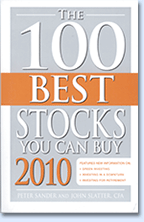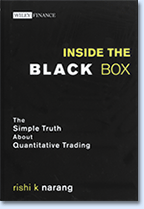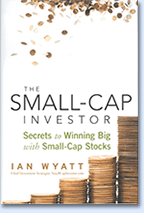Books For Traders
February 2010
- The 100 Best Stocks You Can Buy 2010
- A Practical Guide To Indicators: Including Turtle Trading
- For Crying Out Loud: From Open Outcry To The Electronic Screen
- Inside The Black Box
- The Small-Cap Investor: Secrets To Winning Big with Small-Cap Stocks
- Thackray’s 2009 Investor’s Guide
Return to Contents

![]() The 100 Best Stocks You Can Buy 2010
The 100 Best Stocks You Can Buy 2010
(313 pages, $15.95 softcover, 2009, ISBN 978-1-59869-780-3) by Peter Sander and John Slatter, Cfa, published by Adams Business, an imprint of Adams Media, a division of F+W Media.
For more than 10 years, this has been a source for investors looking to make money on Wall Street. The 2010 edition counsels you on the best stock choices in a time of volatility and discusses investing tactics in a recession. There are also tips on investing in environmentally responsible stocks and building a retirement portfolio. The stock market is a risky place, but with this guide you may still earn a profit in tough times.
Additional information: www.adamsmedia.com
BACK TO LIST

![]() A Practical Guide To Indicators: Including Turtle Trading
A Practical Guide To Indicators: Including Turtle Trading
(144 pages, $39.95 softcover, 2009, ISBN 978-90-77553-09-1) by Rombout H. Kerstens, published by Keyword Info Systems BV.
This guide to indicators leads you through the selection and application of technical analysis indicators and trading systems, with practical and useful information. It describes the most common trend-following indicators and also covers the backtesting and optimization of indicators, and discusses do-it-yourself trading systems, though successful trading is the correct buy/sell timing based on technical analysis other key subjects — psychological factors and money management — are equally important. The pros and cons of various financial instruments — futures, options, and Cfds — are also discussed.
Additional information: www.keyword.nl
BACK TO LIST

![]() For Crying Out Loud: From Open Outcry To The Electronic Screen
For Crying Out Loud: From Open Outcry To The Electronic Screen
(343 pages, $39.95 hardcover, 2009, ISBN 978-0-470-22943-9) by Leo Melamed, published by John Wiley & Sons.
The Chicago Mercantile Exchange (now Cme Group) consistently defied the status quo to become the poster child for change. This book covers the developments in futures markets and the battles, personalities, and strategies that transformed the futures markets from the open outcry birth to the electronic future, where technological and global issues are interwoven with financial markets. In the midst of global financial meltdown, the Cme performed without a hitch. How it has grown from trading livestock futures to a powerhouse of futures and options can be found in this work.
Additional information: www.wiley.com
BACK TO LIST

![]() Inside The Black Box
Inside The Black Box
(224 pages, $49.95 hardcover, 2009, ISBN 978-0-470-43206-8) by Rishi K. Narang, published by John Wiley & Sons.
Quantitative trading strategies — known as black boxes — have gained a reputation of being difficult to explain or understand. In a nontechnical style, with real-world examples and anecdotes, this resource take you on a detailed tour through a black box. It sheds light on the work that quants do and lifts the veil of mystery around quantitative trading. The lessons learned here will help you gain and edge in today’s turbulent market. Some tough questions are answered in these pages.
Additional information: www.wiley.com
BACK TO LIST

![]() The Small-Cap Investor: Secrets To Winning Big with Small-Cap Stocks
The Small-Cap Investor: Secrets To Winning Big with Small-Cap Stocks
(172 pages, $27.95 hardcover, 2009, ISBN 978-0-470-40526-0) by Ian Wyatt, published by John Wiley & Sons.
Author Wyatt is the chief investment strategist of SmallCapInvestors.com. He is dedicated to helping investors find great companies at bargain prices, and in this book he will help you do the same. He outlines his investment process and the systems that are involved. He takes time to explain the criteria involved in picking the right stocks, and timing your buy/sell decisions. He shows you how to find winners and avoid losers. Many large-cap companies started out small. Investors who bought these great companies early on profited handsomely. If you follow Wyatt’s guidance, you’ll have an edge over other investors.
Additional information: www.wiley.com
BACK TO LIST

![]() Thackray’s 2009 Investor’s Guide
Thackray’s 2009 Investor’s Guide
(206 pages, $19.95 softcover, 2009, ISBN 978-0-9782200-1-3) by Brooke Thackray, published by Mount Alpha Media.
This guide reveals the seasonal strengths of the stock market and its different sectors as well as nonstock investments, such as bonds, commodities, and foreign exchange. It gives you an edge by directing you to be in different sectors of the market when they tend to advance, out when they tend to decline. It does not matter what kind of a trader you are, you can use the strategies in this book. It has an investment process that helps you select the best sectors at the right time.
Additional information: www.alphamountain.com
BACK TO LIST